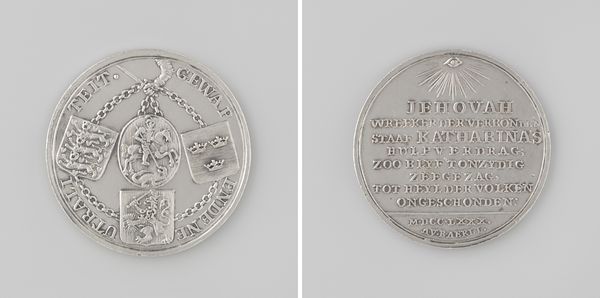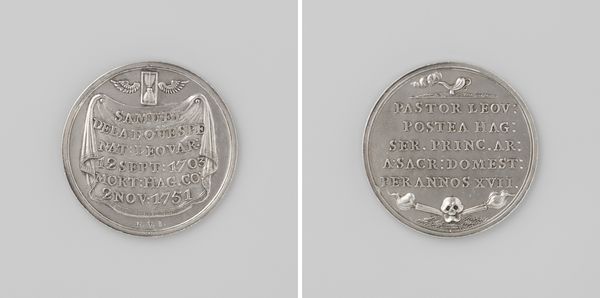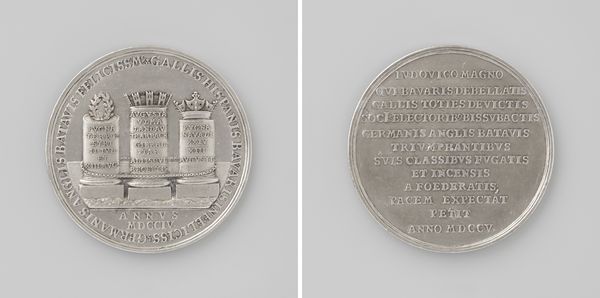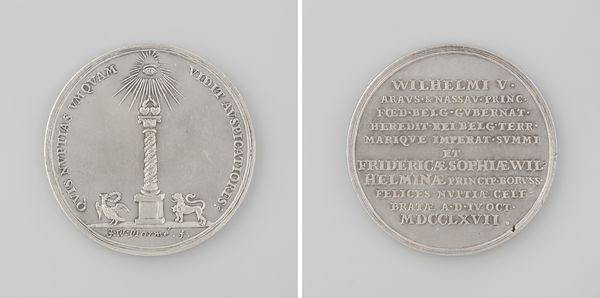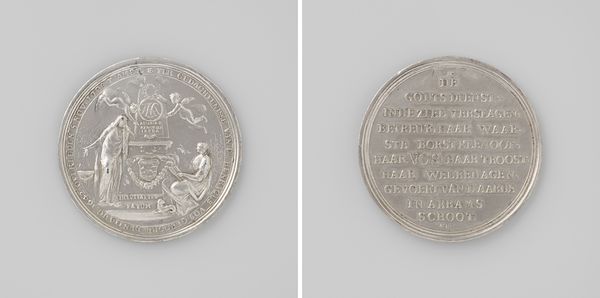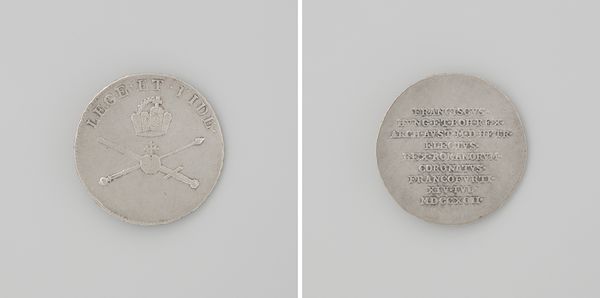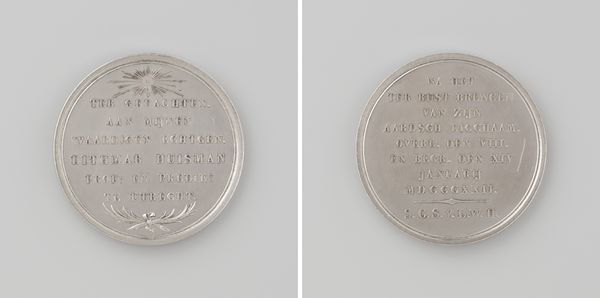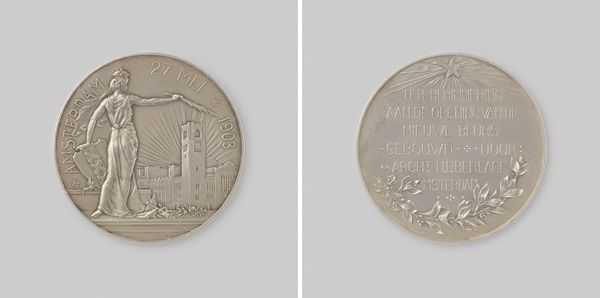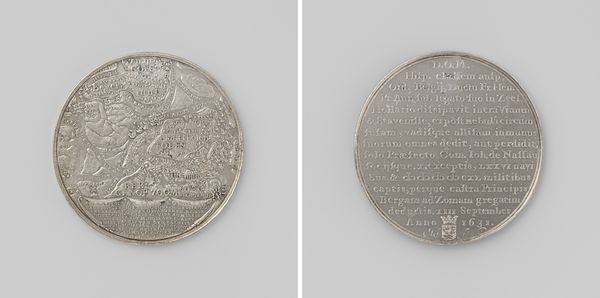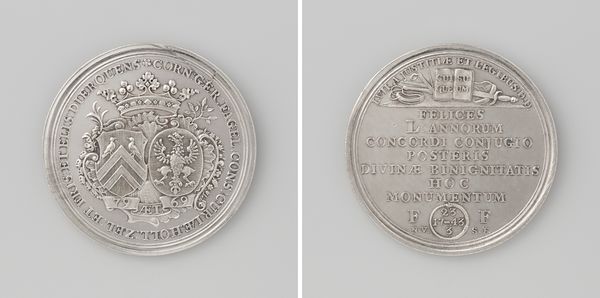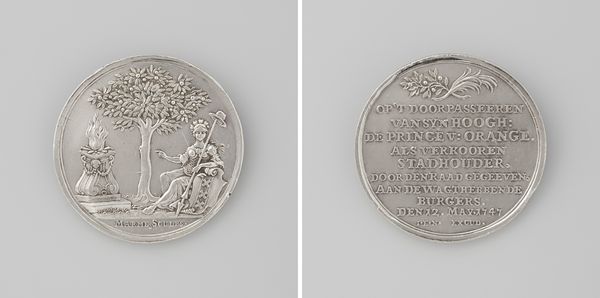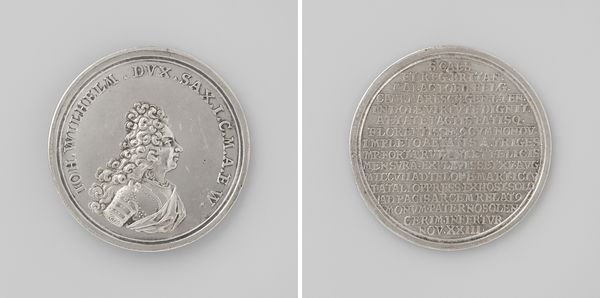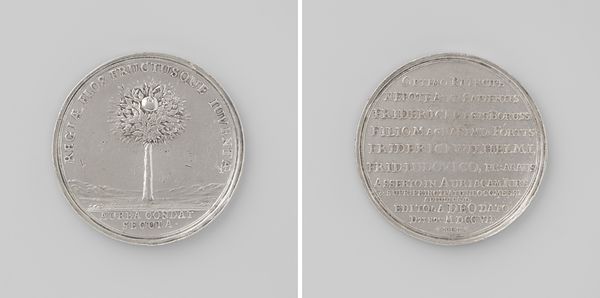
Dimensions: diameter 3 cm, weight 10.51 gr
Copyright: Rijks Museum: Open Domain
Curator: This circular engraving from 1781 by Adrianus Martinus Josephus van Baerll depicts "The Battle of Dogger Bank" on a silver coin, doesn’t it? Editor: Indeed. At first glance, the stark simplicity and precise lines create a mood that is, surprisingly, less triumphant and more somber than I would expect. What story is etched here? Curator: On one side, the naval engagement is pictured—ships billowing with smoke, tiny figures perhaps suggesting the chaos of conflict. On the other, an inscription honors a leader for restoring dignity to their flag, even amidst overwhelming odds. The typography itself reflects a classical reserve, characteristic of Baroque aesthetics. Editor: Ah, context becomes key. The Dutch Republic's naval conflict with Britain during the Fourth Anglo-Dutch War. These wars were less about open seas and free trade and more about geopolitical power—who got to dominate the maritime routes? The “freedom” celebrated here then isn’t just about a flag; it’s about mercantile power, colonial ambitions, and dominance. Curator: Precisely! Look at how the lines, however minute, create such tension—the tilt of the ships, the way the text sits within that perfect circle, the texture achieved on such a limited scale. These elements contribute to its effectiveness as propaganda. Editor: Propaganda masquerading as tribute. That textual inscription hints at divine justification "GOD STAAT UW REGT" and then champions Orange power over other Dutch political factions as a heroic act. What of the common sailors? Are their lives valued at all? This object speaks volumes about the elite’s manipulation of historical memory. Curator: We mustn’t forget that Baroque art often functioned as a tool for projecting power and legitimizing the ruling class. It serves its intended audience while following formal stylistic conventions of balance and detail, though, in a rather distilled form because of the dimensions. Editor: Indeed. It prompts questions about heroism and power that are relevant even today. An engagement memorialized, but on whose terms? The silversmith immortalized what? The state-approved narrative? It's a potent little token and a reminder of the human costs and the propaganda used to justify it. Curator: Very well observed; it is fascinating how close study reveals layers that simple appreciation may miss.
Comments
No comments
Be the first to comment and join the conversation on the ultimate creative platform.
